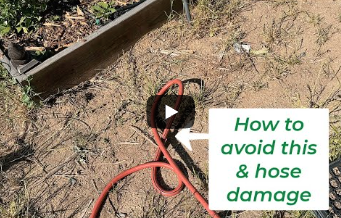Finding The Best Fertilizer for Your Garden and Plants
Fertilizer labels can be confusing and intimidating, but understanding them is crucial for gardening success. They contain valuable information about the nutrients present in the fertilizer, its application rate, and its type. In this blog post, we’ll walk you through how to read fertilizer labels, what the numbers mean, other things to consider, organic options, and examples of different types and uses with their numbers.
What do the Fertilizer Numbers Mean?
The three numbers on fertilizer labels represent the percentage of the three primary macronutrients – nitrogen (N), phosphorus (P), and potassium (K) – present in the fertilizer. For instance, a fertilizer label with 10-10-10 means that it contains 10% nitrogen, 10% phosphorus, and 10% potassium. The numbers are always listed in the same order, with nitrogen first, followed by phosphorus, and potassium last.
Nitrogen (N) is essential for leaf and stem growth. Phosphorus (P) helps in root development, flowering, and fruiting. Potassium (K) aids in the overall health and stress tolerance of plants. Different plants have varying nutrient requirements, so it’s crucial to choose the right fertilizer for your plants.
Other Things to Consider:
Fertilizer labels may also indicate secondary macronutrients like calcium, magnesium, and sulfur, or micronutrients like iron, zinc, and copper. These elements are necessary for plant growth, but plants require them in smaller quantities than the primary macronutrients.
Fertilizers also come in different types – granular, liquid, and slow-release. Granular fertilizers are typically applied to the soil and last for weeks or months. Liquid fertilizers are mixed with water and applied directly to the plant’s leaves, stems, or soil. Slow-release fertilizers are mixed with the soil and release nutrients slowly over a more extended period.
Organic Fertilizers
Organic fertilizers contain natural ingredients like animal manure, compost, and bone meal. They offer several benefits over synthetic fertilizers, including improving soil health, reducing chemical runoff, and promoting beneficial microorganisms in the soil.
Examples of Different Fertilizer Types and Uses
- All-Purpose Fertilizers (NPK 10-10-10) – Suitable for most plants, including vegetables, flowers, and trees. It contains balanced amounts of nitrogen, phosphorus, and potassium.
- High-Nitrogen Fertilizers (NPK 24-0-0) – Ideal for plants that require a lot of leafy growth, such as lawns, vegetables, and some annual flowers.
- High-Phosphorus Fertilizers (NPK 0-46-0) – Suitable for plants that require strong root systems, such as fruit trees and shrubs.
- High-Potassium Fertilizers (NPK 0-0-60) – Suitable for flowering and fruiting plants, such as tomatoes, peppers, and roses.
Understanding fertilizer labels is critical for successful gardening. By reading the label, you can select the right fertilizer with the appropriate macronutrient ratios for your plants. Don’t forget to check the type of fertilizer, secondary macronutrients or micronutrients, and whether the fertilizer is organic or synthetic. With the right fertilizer and proper care, your garden will thrive and produce healthy, vibrant plants.
Recent Posts

The Power of Mounding: An Essential Gardening Technique for Healthy Plants

The Ultimate Guide to Philodendron Birkin – Care, Tips, and Benefits

Watering Plants – Indoor Edition

The Advantages of Built-Up Garden Beds: A Gardener’s Best Friend

The Secret Weapon for Lush Blooms: How to Create the Perfect Fertilizer Schedule










